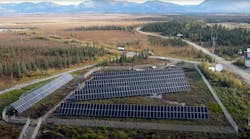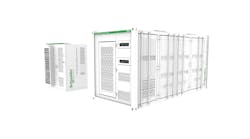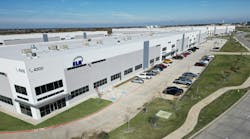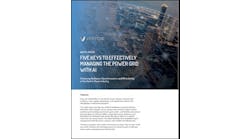Two small coastal communities along Australia’s south coast will soon share bragging rights for a unique community microgrid.
Around 100 homes in the neighboring towns of Bawley Point and Kioloa are participating in what is being called the first community microgrid of its kind in New South Wales (NSW). Located about 150 miles south of Sydney, the remote region is prone to bushfires and strong storms that can knock out power for extended periods of time.
“In the Bawley Point and Kioloa area, being without electricity means that you have no telecommunications, and as we rely solely on tank water, it also means that when you have no power, you have no water,” said Liza Butler, NSW legislative assembly member for the South Coast and the chair of the community microgrid committee.
Improving electric reliability for at-risk communities
Endeavour Energy, the company behind the community microgrid, operates the electrical distribution network for more than 2.7 million people in its service area, which extends north and west of Sydney and down the south coast of New South Wales.
The towns, which have a combined population of around 1,000, are at the edge of Endeavour’s network.
“These two towns, like many other rural and regional communities across Australia, are vulnerable to catastrophic weather events. The grid independence provided by this microgrid becomes essential for their survival and safeguarding our regional communities,” said Guy Chalkley, Endeavour Energy’s chief executive officer.
Chalkey said that what makes this project unique is its customer centric and integrated approach to planning. “We can call upon a customer’s energy resources such as rooftop solar and batteries to add resilience to the network and the community’s power supply,” he said.
The community microgrid will be a self-contained energy system that will draw energy from rooftop solar and home-based batteries located at approximately 100 homes across both communities.
A 3-MW grid-connected battery that is sited strategically between the two neighboring communities is also connected to the microgrid.
This design allows the system to disconnect from the main power grid and operate autonomously during outages in what’s commonly known as island mode.
"Australia is leading the world’s distributed energy resource (DER) market. This first of its kind microgrid for Endeavour Energy and NSW combines high penetration of DERs, grid storage, flexible load and virtual power plants (VPPs),” said Natan Barak, chief executive officer of mPrest, which has been selected by Endeavour to provide the distributed energy resource management systems (DERMS) software for the project.
The approach is expected to provide a more reliable, stand-alone and renewable electricity supply that will reduce the number of power outages the communities experience.
“We saw during the bushfires that energy reliability was a significant issue. This microgrid will make our communities more resilient, better prepared for future disasters, and will also deliver significant environmental benefits,” said Fiona Philips, Federal MP for Gilmore.
“This is where future grid technology meets resilience," said Albert Pors, future grid systems manager at Endeavour Energy.
Laying the foundation for the future
The Bawley Point – Kioloa community microgrid is just another example of how Australia has embraced microgrid technology. From logistics facilities, to retail stores and agricultural settings, microgrids are popping up across the country.
This latest microgrid project will make isolated communities more resilient while laying the foundation for future renewable energy solutions, according to Chalkey.
The AU $8 million (US $5.3 million) project is funded by the Australian and NSW Government’s Bushfire Local Economic Recovery Fund, along with Endeavour Energy and participating residents.
Residents received subsidies to aid in the purchase of either a 5-kW rooftop solar system or a 13.5-kWh battery.
Those opting to have the solar system installed were responsible for 40% of the cost, or around AU $2,400 (US $1,568). Those that already had solar on their home could purchase the home-based battery at a subsidized rate, which was 45% of the cost, or AU $6,750 (US$4,409).
There was also an opportunity for homeowners to install both solar and a battery system at the same time. Homeowners were responsible for the full cost of the rooftop solar array and 45% of the cost of the battery.
The first residential batteries were installed in December 2022.
“We have co-designed this innovative solution in partnership with the local community and are pleased that it will serve as a blueprint for other communities, empowering them to embrace renewable energy and attain self-sufficiency during times of crisis, Chalkey said”
Endeavour Energy expects the community microgrid will be fully operational by the end of the year.
Track news about microgrids worldwide. Subscribe to the free Microgrid Knowledge newsletter.








